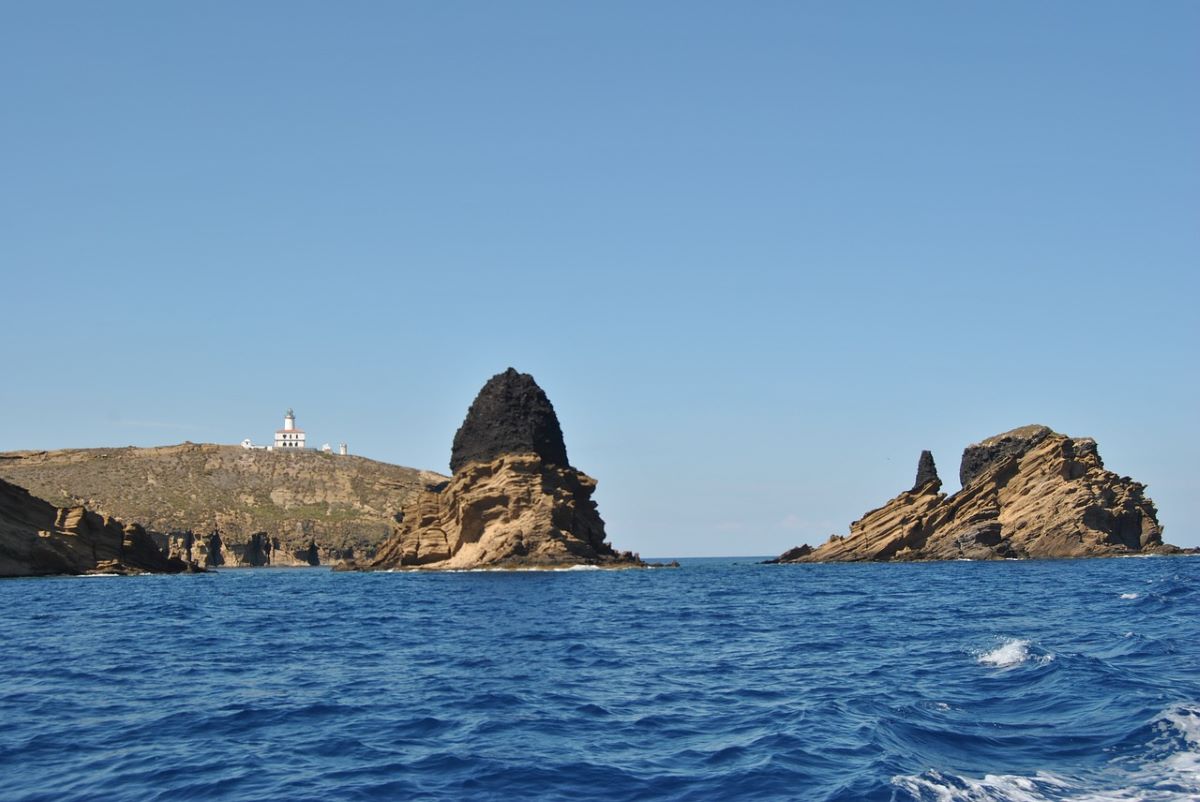
Image | Pixabay
Located 56 kilometers from Castellón, the Columbretes archipelago is one of the Mediterranean Sea reserves with the greatest ecological interest for an excursion in the province. Of volcanic origin and on 80-meter-deep seabeds emerge the four islands that make up the archipelago: Columbrete Grande, La Ferrera, La Forarada and El Carallot.
Origin of the Columbretes Islands
Given the large number of reptiles that lived here, the ancient Romans called this archipelago the Serpent Islands. Precisely, Columbretes comes from the Latin word columber, which in Spanish means snake.
Until the early nineteenth century the only people who came to them were fishermen or smugglers, but in 1860 the construction of a lighthouse made so many snakes began to be annoying since there were several incidents with them. For this reason it was decided to eliminate them from the islands and today there are none left.
What are the Columbretes Islands like?
Grossa Island
Illa Grossa (also known as Columbrete Grande) is the largest of the Columbretes Islands and the only one that is inhabited and where today you can disembark. It is shaped like an ellipse of approximately one kilometer and up to Torfiño, its small port, boats arrive from El Grao so that visitors can make an interpretive route that leads them to the lighthouse at 67 meters high.
La Foradada Island
It is a short distance from Illa Grossa. The second group of islands is made up of three islands in total, the main one being known as La Horadada. The other two islands are Isla del Lobo and Méndez Núñez, the smallest of all. They are part of a natural reserve so access to them is not allowed, although you can dive to contemplate the rich seabed.
Ferrera islets
It is a small archipelago of volcanic origin made up of eight islands, some of them so small that they are considered large rocks. The main one of the whole group is called Ferrera because due to its color it looks like iron although it is also called Malaspina.
It is located 1.400 meters from Isla Grossa and rises 44 meters above the sea. Being so steep and having unstable rock blocks it is practically inaccessible. Other islands that make up the Islotes de la Ferrera are Bauza, Navarrete and Valdés.
El Bergatín Island
Also known as Carallot Island, it is the most important island of the smallest archipelago that makes up the Columbretes Islands. Some of these other islands are Cerqueiro, Churruca and Beleato.

Image | Pixabay
Fauna and flora of the Columbretes Islands
On land we can find a multitude of birds that have made the Columbretes Islands their home to nest and feed their chicks. Such is the case of Audouin's gull, Eleonor's falcon or Cinderella's shearwater to name a few examples. On the other hand we can also find specimens of reptiles such as the so-called Iberian lizard.
Regarding the fauna that lives in the waters surrounding the Columbretes Islands, there is a great diversity of marine species such as bream, moray eels, groupers, bream, barracudas, mantas, red mullets, lobsters, lobsters, croakers, castanets, green fish, sponges and Loggerhead turtles, which find refuge from predators in this archipelago. Sometimes you can even enjoy the presence of bottlenose dolphins and sunfish.
Among the marine flora we can cite species such as cystoseira amentácea, Mediterranean cystoseira and numerous species of coral such as red, among others. As for the terrestrial vegetation, the appearance of the Columbretes Islands during the spring is greenish and flowery thanks to the rains that occur between March and June. Some examples of this vegetation are palm trees, mastic, sea fennel, sea carrot, alfalfa trees, etc.

Image | Pixabay
How to know the Columbretes Islands?
The archipelago of the Columbretes is a natural reserve while its waters belong to the Marine Reserve of the Columbretes Islands, so we are faced with a highly protected environment that allows snorkeling and diving to be a paradise. Scattered around the towns on the coast there are many schools with excursions with an underwater guide to the Columbretes. You can rent the equipment for diving, either the complete equipment or individual pieces.
Requirements to dive in Columbretes Islands
- Original ID / Passport.
- Diver title.
- Diving insurance in force
- Book of dives with a minimum of 25 dives and the last one carried out in the last year.
- Medical certificate made in the last two years.